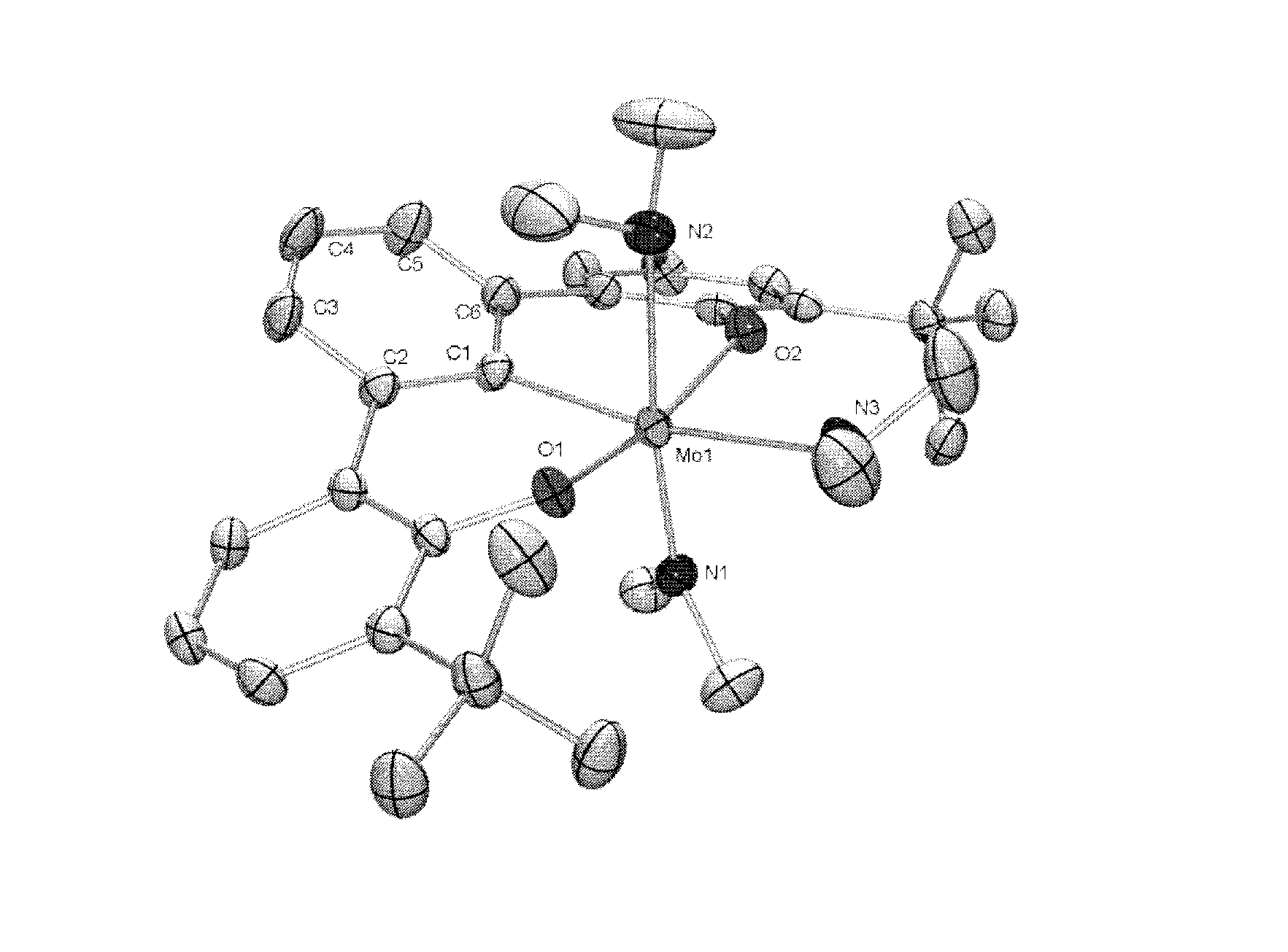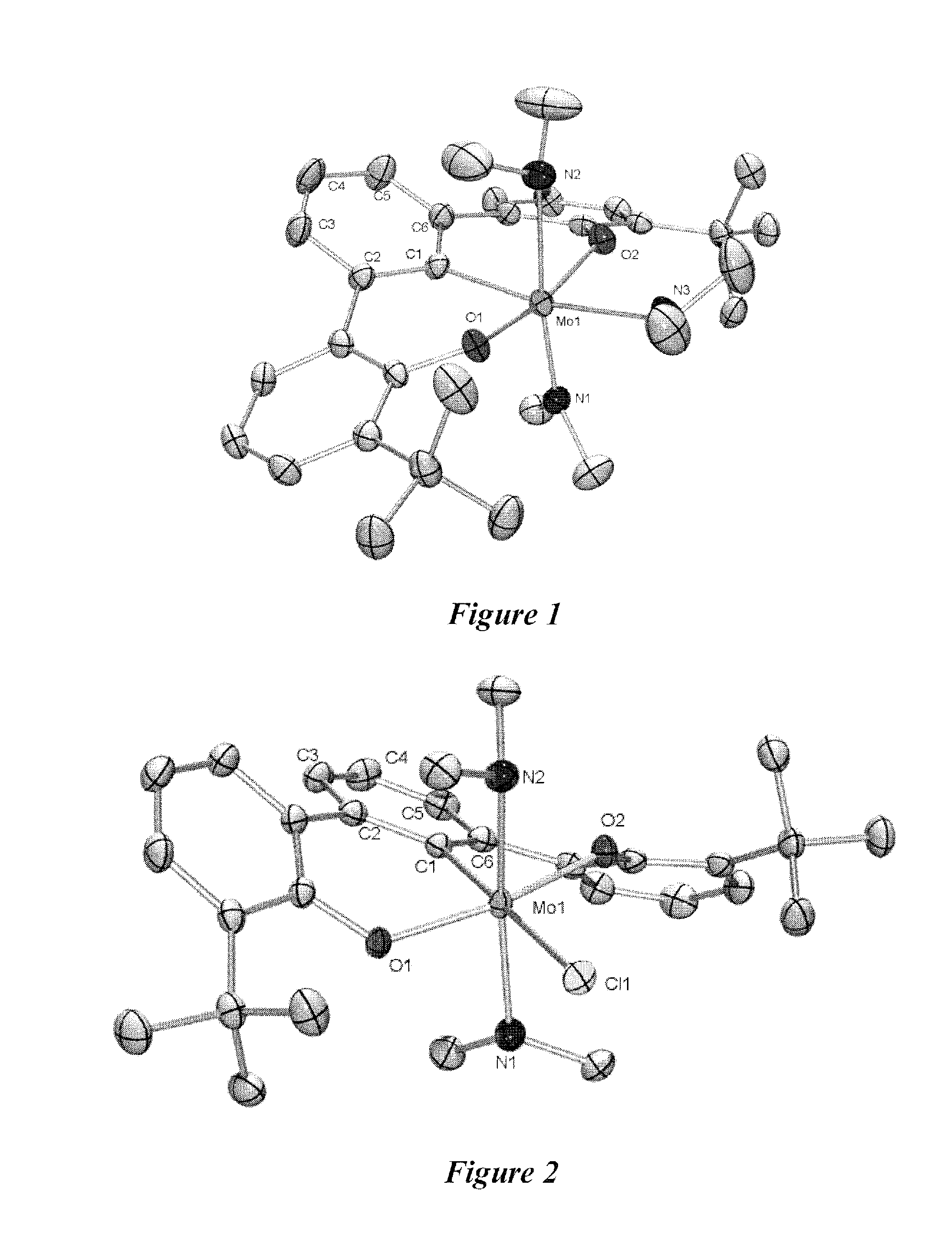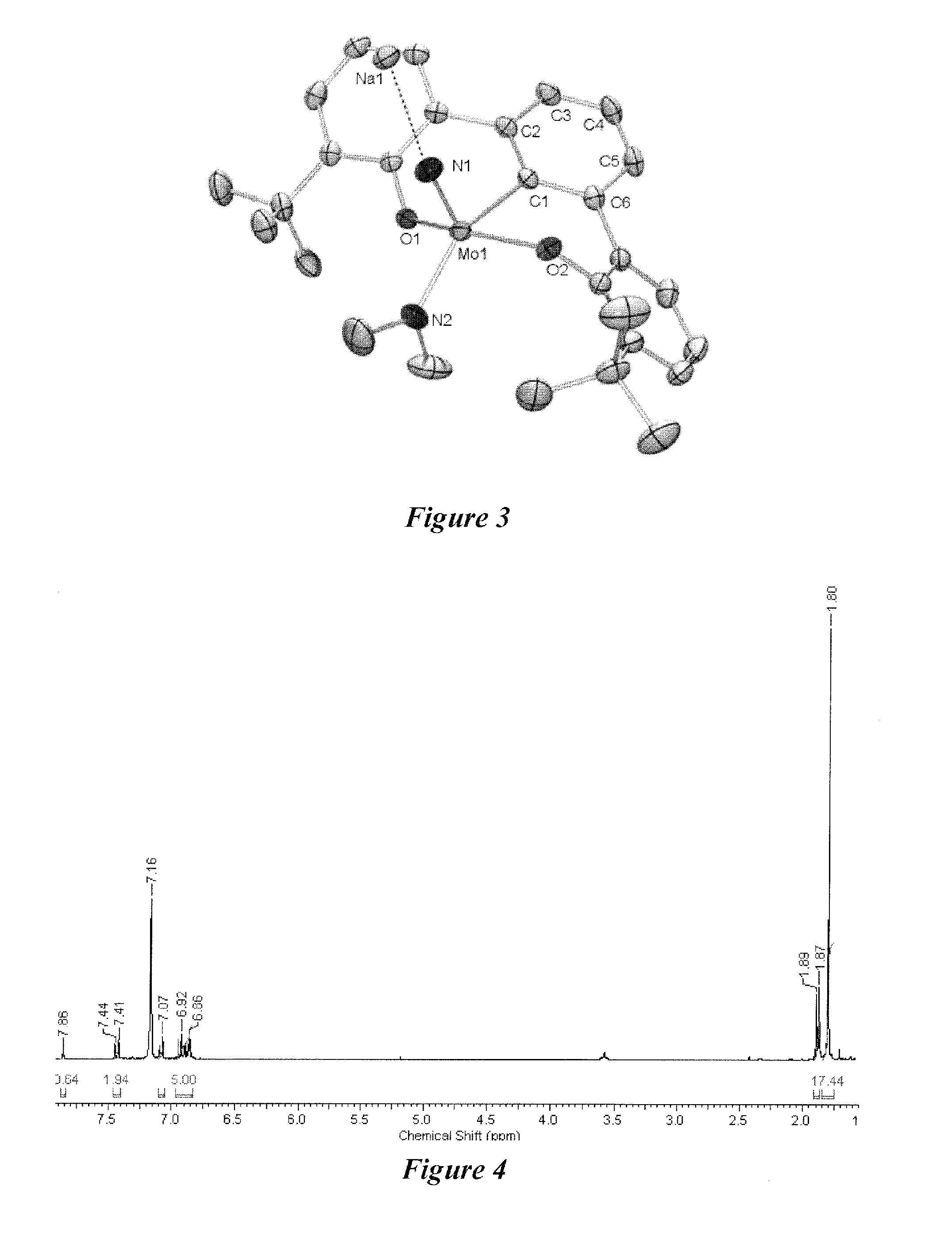Method for transferring N-atoms from metal complexes to organic and inorganic substrates
a technology of metal complexes and n-atoms, which is applied in the preparation of organic compounds, carboxylic acid nitrile preparations, organic chemistry, etc., can solve the problems that ligands are not well suited to forming complexes with the early transition metals
- Summary
- Abstract
- Description
- Claims
- Application Information
AI Technical Summary
Benefits of technology
Problems solved by technology
Method used
Image
Examples
Embodiment Construction
[0017]One embodiment of the invention is directed to a metallic nitride pincer ligand complex that can be used for the formation of nitrogen comprising compounds. The pincer ligand is of a hard-hard-hard type, where three donor atoms for complexation are of a hard type as known to those skilled in the art. The metallic species of the complex is an early transition metal (group 3-6) in a high oxidation state. In one embodiment, the transition metal is molybdenum (Mo). The nitride of the complex is in a form that can readily add to an electrophile and after addition of the electrophile, a nitrogen containing compound can be released from the complex. Another embodiment of the invention is a method for the synthesis of a nitrogen compound employing the transfer of nitrogen from an early transition metal nitride pincer ligand complex.
[0018]The novel complex is derived from an OCO pincer ligand of the structure:
[0019]
[0020]where all carbons at positions 3,4,5,4′,5′,6′,3″,4″ and 5″ can be...
PUM
| Property | Measurement | Unit |
|---|---|---|
| torsion angles | aaaaa | aaaaa |
| torsion angles | aaaaa | aaaaa |
| torsion angles | aaaaa | aaaaa |
Abstract
Description
Claims
Application Information
 Login to View More
Login to View More - R&D
- Intellectual Property
- Life Sciences
- Materials
- Tech Scout
- Unparalleled Data Quality
- Higher Quality Content
- 60% Fewer Hallucinations
Browse by: Latest US Patents, China's latest patents, Technical Efficacy Thesaurus, Application Domain, Technology Topic, Popular Technical Reports.
© 2025 PatSnap. All rights reserved.Legal|Privacy policy|Modern Slavery Act Transparency Statement|Sitemap|About US| Contact US: help@patsnap.com



